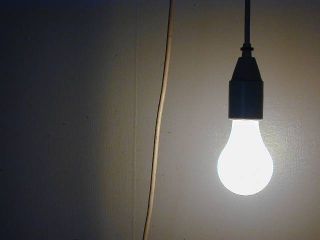As a follow-up to my latest WorkPuzzle entry, I felt that I couldn't leave you hanging, and had to include some answers in this edition.
So, here are the answers to a few of the interview questions that I found particularly clever:
- If you were shrunk to the size of a pencil and put in a blender, how would you get out? ANSWER: If I was a pencil, I would not have a brain and therefore would not even be able to comprehend that I am in a blender, nor would I know that it is necessary to get out.
- How many ridges are there around the edge of a quarter? ANSWER: A U.S. quarter has 119 ridges (termed "reeds" by the U.S. Mint).
- How many basketballs can you fit in this room? ANSWER: One. You did not ask what is the maximum number of basketballs you can fit in the room.
- Out of 25 horses, pick the fastest three horses. In each race, only five horses can run at the same time. What is the minimum number of races required? ANSWER: Without timing the races, the answer would be 12. You could have the three fastest horses run in the same race, so you need to account for that possibility. You run five races and keep the top three finishers in each race. You are left with 15 horses. You run three more races and keep the top three finishers, leaving you with nine horses. Two more races leaves you with six horses. Take the last place finishers in each of the last two races and have them race. The winner of this gets placed into the final race with five horses.
- Given the numbers 1 to 1,000, what is the minimum number of guesses needed to find a specific number if you are given the hint “higher” or “lower” for each guess you make? ANSWER: The minimum number is 1. You can guess it correctly the first time, or guess 2 or 999 and get it with a higher or lower hint. So you have 3 possibilities of getting the correct answer with one guess.
- An apple costs 20 cents, an orange costs 40 cents, and a grapefruit costs 60 cents. How much is a pear? ANSWER: Due to the fact that this question is read to you, you could answer: A 'pair' of apples would cost 40 cents, a pair of oranges would be 80 cents, and pair of grapefruit would cost $1.20.
- You are in a dark room with no light. You have 19 gray socks and 25 black socks. What are the chances you will get a matching pair? Answer: If there were an equal number of gray and black, the answer would be .5 or 50%. As there are six extra black socks, three pairs will have 100% match. Thus, the answer should be 50% ++ as follows: = {19 pairs x (50% chances) + 3 pairs x (100% chances)} / 21 Total Pairs = (900+300)/21= 1200 / 21= 57.14% chances.
- What do wood and alcohol have in common? Answer: Each word contains two o's.
- You have eight pennies. Seven weigh the same, but one weighs less. You also have a judge's scale. Find the penny that weighs less in three steps. ANSWER: Split into two piles of four and compare the weights of the two piles. Take the lighter pile and split that into two piles of two and compare the weights. Take the lighter pair of pennies and compare the weights of them.
- What’s the square root of 2000? ANSWER: 44.72135954
- How are M&Ms made? Answer: M&M's have two main components (1) hardened liquid chocolate and (2) hard candy shell. Liquid chocolate is poured into molds and then harden. The hard candy shell is formed by spraying on layers, each of which is allowed to dry. The color is added to the final coat. Each batch is a different color.

We at Tidemark had some fun with these. So here is one more that one of our team member's spouse was asked during his Microsoft interview several years ago:
If there were three light bulbs upstairs that were each operated by three switches downstairs, how could you determine which switch operated each light, and only take one trip upstairs?
There is a solution to this scenario. Please feel free to share your anwers…

